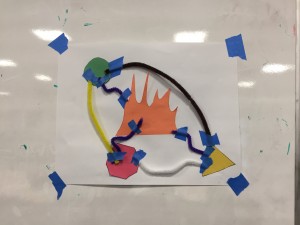
The Design Process: Access TV Style
Hello everyone, Amber here!
I work at Billerica Access Television (BATV) where, in my current capacity as Youth Coordinator, I create and manage youth media programs. Essentially, I work with groups of students, teachers, and community members to help Billerica’s younger populations think critically about the media they consume while also empowering them to create their own media. I’m always looking to grow our programs and venture into new project areas as technology and the interests of the students I work with change, which is why I’m here! I’m really looking forward to working with everyone and seeing the progression of everyone’s projects in the Co-Design Studio!
My project idea popped into my head while I was planning out curriculum for one of my middle school groups. I plan to have this group in particular make PSAs that center around a topic that they feel is relevant and important to them. But this got me thinking: kids are often left out of the mix when it comes to town issues and town government. Sure, they aren’t able to vote yet, but that doesn’t mean that there aren’t issues and decisions in town directly or indirectly impacting them.
Additionally, although the “how” of town government is taught in schools (i.e. how the system works), the “why” and “what” are often neglected. When I asked a few of my students (5th grade, 8th grade, and 10th grade) if they knew what was being discussed in our town’s various committee meetings, they “had no idea” and “why should they?” because “that stuff’s boring.” The responses were what I expected, but it’s still concerning. How are kids supposed to develop into citizens who fight for their rights, challenge oppressive systems, bring awareness to issues, and generally feel empowered if they don’t know or care to know what is going on in their own town hall? People can learn about these things as they get older, but why not start earlier? Why wait?
My goal in this class is to develop a project that engages Billerica’s youth in understanding what articles/issues are discussed in town government without having to sit through multiple hours a week of broadcasted meetings. It should be interactive, include BATV resources (e.g. VR or 360 video technologies), and, most importantly, be developed with student input taking the forefront. Kids may not be interested in this type of subject matter, but if they are included in the process and taken seriously, they are more likely to feel invested in the project. I don’t want students to feel talked down to by another adult who claims they know what’ll work best. I want to help foster a collaboration between students, BATV, the schools, and the town in order to make this project as successful as possible. I realized I definitely needed help with this undertaking, which is why I seized the opportunity to join the co-design studio.
The expectation I have for my design process (pictured above) is that it will originate from the current resources at BATV and in Billerica, which is noted by the old school television set and green background (Billerica’s colors are green and white). The three squiggly lines coming from the “rabbit ears” signifies our station’s three channels: public, government, and educational. In the process, I hope to see an explosion of creativity and a re-thinking of these current systems, which is signified by the central squiggly line aka our government channel with the pink “firework” coming out of it. I imagine that lots of ideas and help will be thrown our way from various sources, which may lead to dead ends or help keep energy alive in the design process (signified by the yellow bits of paper). Most importantly, I imagine that the process itself will “crack open” the public’s preconceived notions about access television (Wayne’s World is great, but that’s not a full representation of what our industry does) and will also challenge my own ideas about how program/project design works. Based on my physical representation, I know that the process will be messy and all over the place. However, it will end up producing a worthwhile project that generates interest and a sense of empowerment when it comes to Billerica’s youth and their town government.
People (including some of my students) have told me that this project may not pan out the way I want it to, which I expect. After all, this is an ambitious project with many moving parts. Design is not easy, but my hope is that through the process of designing whatever this project becomes, something positive will emerge.








